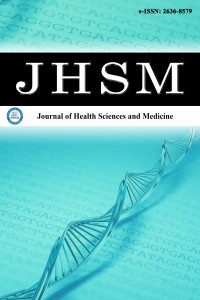1.
Kannan S, Shaik Syed Ali P, Sheeza A, Hemalatha K. COVID-19 (novel Coronavirus 2019)-recent trends. Eur Rev Med Pharmacol Sci. 2020; 24(4):2006-2011. doi:10.26355/eurrev_202002_20378
2.
Huang C, Wang Y, Li X, et al. Clinical features of patients infected with 2019 novel Coronavirus in Wuhan, China. Lancet. 2020;395(10223):497-506. doi:10.1016/S0140-6736(20)30183-5
3.
Üzel VH, Yılmaz K, Şen V, et al. Evaluation of hematological parameters of children diagnosed with COVID-19: single-center experience. Turk Arch Pediatr. 2021;56(5):463-468. doi:10.5152/TurkArchPediatr.2021. 21076
4.
Ludvigsson JF. Systematic review of COVID-19 in children shows milder cases and a better prognosis than adults. Acta Paediatr. 2020;109(6): 1088-1095. doi:10.1111/apa.15270
5.
Zimmermann P, Curtis N. Coronavirus infections in children including COVID-19: an overview of the epidemiology, clinical features, diagnosis, treatment and prevention options in children. Pediatr Infect Dis J. 2020;39(5):355-368. doi:10.1097/INF.0000000000002660
6.
Okour M, Al-Kofahi M, Austin D. Hydroxychloroquine and azithromycin as potential treatments for COVID-19; clinical status impacts the outcome. J Pharmacokinet Pharmacodyn. 2020;47(3):187-188. doi:10.1007/s10928-020-09689-x
7.
Gautret P, Honoré S, Lagier JC, Raoult D. Safety profile of hydroxychloroquine and azithromycin combined treatment in COVID-19 patients. Int J Antimicrob Agents. 2021;57(1):106236. doi:10. 1016/j.ijantimicag.2020.106236
8.
Lagier JC, Million M, Gautret P, et al. Outcomes of 3,737 COVID-19 patients treated with hydroxychloroquine/azithromycin and other regimens in Marseille, France: a retrospective analysis. Travel Med Infect Dis. 2020;36:101791. doi:10.1016/j.tmaid.2020.101791
9.
Terzioğlu Bebitoğlu B, Oğuz E, Hodzic A, Oğuz E, Hodzic A, Hatiboğlu N, Kam Ö. Chloroquine/hydroxychloroquine: pharmacological view of an old drug currently used in COVID-19 treatment. Anat Clin. 2020;25(1): 204-215. doi:10.21673/anadoluklin.735826
10.
Ben-Zvi I, Kivity S, Langevitz P, Shoenfeld Y. Hydroxychloroquine: from malaria to autoimmunity. Clin Rev Allergy Immunol. 2012;42(2):145-153. doi:10.1007/s12016-010-8243-x
11.
Gautret P, Hoang VT, Lagier JC, Raoult D. Effect of hydroxychloroquine and azithromycin as a treatment of COVID-19: results of an open-label non-randomized clinical trial, an update with an intention-to-treat analysis and clinical outcomes. Int J Antimicrob Agents. 2021;57(1): 106239. doi:10.1016/j.ijantimicag.2020.106239
12.
Goldman JD, Diaz G, Urba WJ. Use of hydroxychloroquine in combination with azithromycin for patients with COVID-19 is not supported by recent literature. Int J Antimicrob Agents. 2021;57(1):106174. doi:10.1016/j.ijantimicag.2020.106174
13.
U.S Food&Drug Adminastiration, drugs, drug safety and availability, FDA cautions against use of hydroxychloroquine or chloroquine for COVID-19 outside of the hospital setting or a clinical trial due to risk of heart rhythm problems. Available from: https://www.fda.gov/drugs/drug-safety-and-availability/fda-cautions-against-use-hydroxychloroquine-or-chloroquine-COVID-19-outside-hospital-setting-or
14.
Republic of Turkiye Ministry of Health, Department of Public Health, COVID-19 Guideline. 02.02.2020. Available from: https://dosyamerkez.saglik.gov.tr/Eklenti/37044/0/covid-19rehberipdf.pdf
15.
Republic of Turkiye Ministry of Health, Department of Public Health Guideline. 06.01.2022. Available from: https://covid19.saglik.gov.tr/Eklenti/42283/0/covid-19rehbericocukhastayonetimivetedavi06012022v1pdf.pdf
16.
Aktar F, Sağır H. Pediatric COVID-19 and its approach. Dicle Med J. 2021;48(3):166-175. doi:10.5798/dicletip.1005406
17.
Asensio E, Acunzo R, Uribe W, et al. Recommendations for the measurement of the QT interval during the use of drugs for COVID-19 infection treatment. Updatable in accordance with the availability of new evidence. J Interv Card Electrophysiol. 2020;59(2)315-320. doi:10.1007/s10840-020-00765-3
18.
World Health Organization. The cardiotoxicity of antimalarials: Malaria Policy Advisory Committee Meeting. Published March 24, 2017. Available from: https://www.who.int/malaria/mpac/mpac-mar2017- erg-cardiotoxicity-report-session2.pdf
19.
Mercuro NJ, Yen CF, Shim DJ, et al. Risk of QT interval prolongation associated with use of hydroxychloroquine with or without concomitant azithromycin among hospitalized patients testing positive for Coronavirus disease 2019 (COVID-19). JAMA Cardiol. 2020;5(9):1036-1041. doi:10.1001/jamacardio.2020.1834
20.
Li C, Cheng G. Will Hydroxychloroquine still be a game-changer for COVID-19 by combining azithromycin? Front Immunol. 2020;11:1969. doi:10.3389/fimmu.2020.01969
21.
Zhou F, Yu T, Du R, et al. Clinical course and risk factors for mortality of adult inpatients with COVID-19 in Wuhan, China: a retrospective cohort study. Lancet. 2020;395:1054-1062. doi:10.1016/S0140-6736(20) 30566-3
22.
Retsema J, Girard A, Schelkly W, et al. Spectrum and mode of action of azithromycin (CP-62,993), a new 15-membered-ring macrolide with improved potency against gram-negative organisms. Antimicrob Agents Chemother. 1987;31(12):1939-1947. doi:10.1128/AAC.31.12.1939
23.
Morens DM, Taubenberger JK, Fauci AS. Predominant role of bacterial pneumonia as a cause of death in pandemic influenza: implications for pandemic influenza preparedness. J Infect Dis. 2008;198(7):962-970. doi: 10.1086/591708
24.
White NJ, Miller KD, Churchill FC, et al. Chloroquine treatment of severe malaria in children. Pharmacokinetics, toxicity, and new dosage recommendations. N Engl J Med. 1988;319(23):1493-1500. doi:10.1056/NEJM198812083192301
25.
Schrezenmeier E, Dörner T. Mechanisms of action of hydroxychloroquine and chloroquine: implications for rheumatology. Nat Rev Rheumatol. 2020;16(3):155-166. doi:10.1038/s41584-020-0372-x
26.
Beukelman T, Patkar NM, Saag KG, et al. 2011 American College of Rheumatology recommendations for the treatment of juvenile idiopathic arthritis: initiation and safety monitoring of therapeutic agents for the treatment of arthritis and systemic features. Arthritis Care Res (Hoboken). 2011;63(4):465-482. doi:10.1002/acr.20460
27.
Braun S, Ferner M, Kronfeld K, Griese M. Hydroxychloroquine in children with interstitial (diffuse parenchymal) lung diseases. Pediatr Pulmonol. 2015;50(4):410-419. doi:10.1002/ppul.23133
28.
Sarayani A, Cicali B, Henriksen CH, Brown JD. Safety signals for QT prolongation or torsades de pointes associated with azithromycin with or without chloroquine or hydroxychloroquine. Res Social Adm Pharm. 2021;17(2):483-486. doi:10.1016/j.sapharm.2020.04.016
29.
Tisdale JE. Drug-induced QT interval prolongation and torsades de pointes: role of the pharmacist in risk assessment, prevention and management. Can Pharm J (Ott). 2016;149(3):139-152. doi:10.1177/17151 63516641136
30.
Akkuş O, Bal T, Yaqoobi H, Bekler Ö, Akkuş G, Çabalak M. Electrocardiographic findings and cardiac safety of hydroxychloroquine +azithromycin in hospitalized patients with COVID-19. Cukurova Med J. 2021;46(2):691-698. doi:10.17826/cumj.856174
31.
Imazio M, Klingel K, Kindermann I, et al. COVID-19 pandemic and troponin: indirect myocardial injury, myocardial inflammation or myocarditis? Heart. 2020;106(15):1127-1131. doi:10.1136/heartjnl-2020- 317186
32.
Wang D, Hu B, Hu C, et al. Clinical characteristics of 138 hospitalized patients with 2019 novel Coronavirus-infected pneumonia in Wuhan, China. JAMA. 2020;323(11):1061-1069. doi:10.1001/jama.2020.1585
33.
Hoang A, Chorath K, Moreira A, et al. COVID-19 in 7780 pediatric patients: a systematic review. eClinicalMedicine. 2020;24:100433. doi:10. 1016/j.eclinm.2020.100433
34.
Hançerli Törün S, Kaba Ö, Sari Yanartas M, et al. Plasma D-dimer: a promising indicator of COVID-19 infection severity or only an acute phase reactant. Minerva Pediatr (Torino). 2021. doi:10.23736/S2724-5276.21.06170-X
35.
Lu X, Zhang L, Du H, et al. SARS-CoV-2 infection in children. N Engl J Med. 2020;382(17):1663-1665. doi:10.1056/NEJMc2005073

